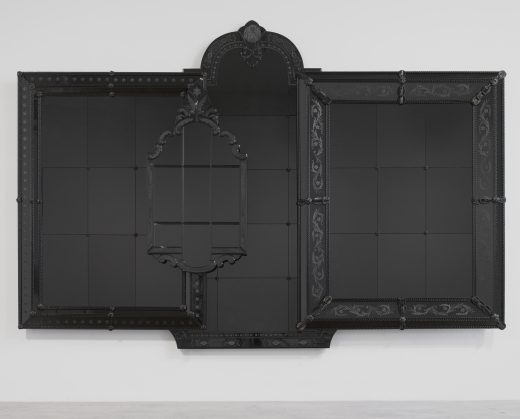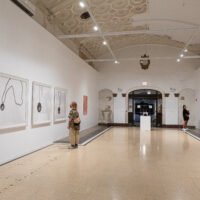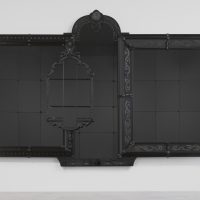Fred Wilson

Fred Wilson is a conceptual artist primarily working in installation and sculpture. Central to his practice are the neglected history of Africans and African Americans and the representation of race within the context of colonization, slavery, and abolition through the use of satire and irony. His exploration into museum collections and institutions’ language of display has led him to question the biases and limitations of interpretation of artworks and how certain historical truth can be distorted or oversimplified. By reframing objects and cultural symbols, Wilson not only challenges the relationship between museums and their works of art, but also provides the viewers with the ability to see the exhibition as a form in and of itself. Wilson’s artistic practice pushes the central principle of the exhibition even further by dismantling the conventions of white supremacy and racism deeply embedded in colonial legacies. In other words, his work opens up an opportunity to reclaim the overlooked potential of social and historical narratives in the sphere of African and African-American identity.
Born in the Bronx, New York, in 1954, Wilson went to Purchase College, State University of New York, in 1976, where he was the only black student in his BFA program. His experience as a guard at his college museum and as a freelance museum educator caused him to realize how museums unwittingly reinforce racist beliefs. Bringing neglected objects out of the depths of the collection of the museum and revealing the hidden power relations that subconsciously shape people’s notions and behavior have become the focal point of Wilson’s entire oeuvre. Rather than creating his own work from scratch, Wilson utilizes existing objects and artworks and reinterprets the meanings that people often overlook.
The artist rose to fame after the success of his groundbreaking exhibition Mining the Museum, held at the Maryland Historical Society in 1992. Wilson excavated the objects forgotten or long banished from view in the museum’s archive and presented them with his own models of categorization and visual language such as new wall labels, sounds, lighting, and non-traditional pairings of objects. For instance, Wilson paired silver tea sets with slave shackles in vitrines. The installation denotes that the prosperity of one could not have been attained without the other. His rearrangement of arts and artifacts calls upon the viewers to recognize the ways in which the institution’s interpretations of artworks are structured by a certain racial viewpoint that could potentially devalue viewers’ knowledge and experiences.
Wilson has been working with black Murano glass for nearly twenty years. Large chandeliers in the Venetian and Ottoman traditions made of the glass are a commentary on history and culture. The historical significance of Venetian chandeliers fabricated in outlandish designs offers constant contradictions of meaning which Wilson uses as a tool to subvert the historically shaped cultural connotations and reinvent new tensions. Wilson’s work is known for unraveling the type of display that seeks to stabilize or fix the meaning of the subject matter.

